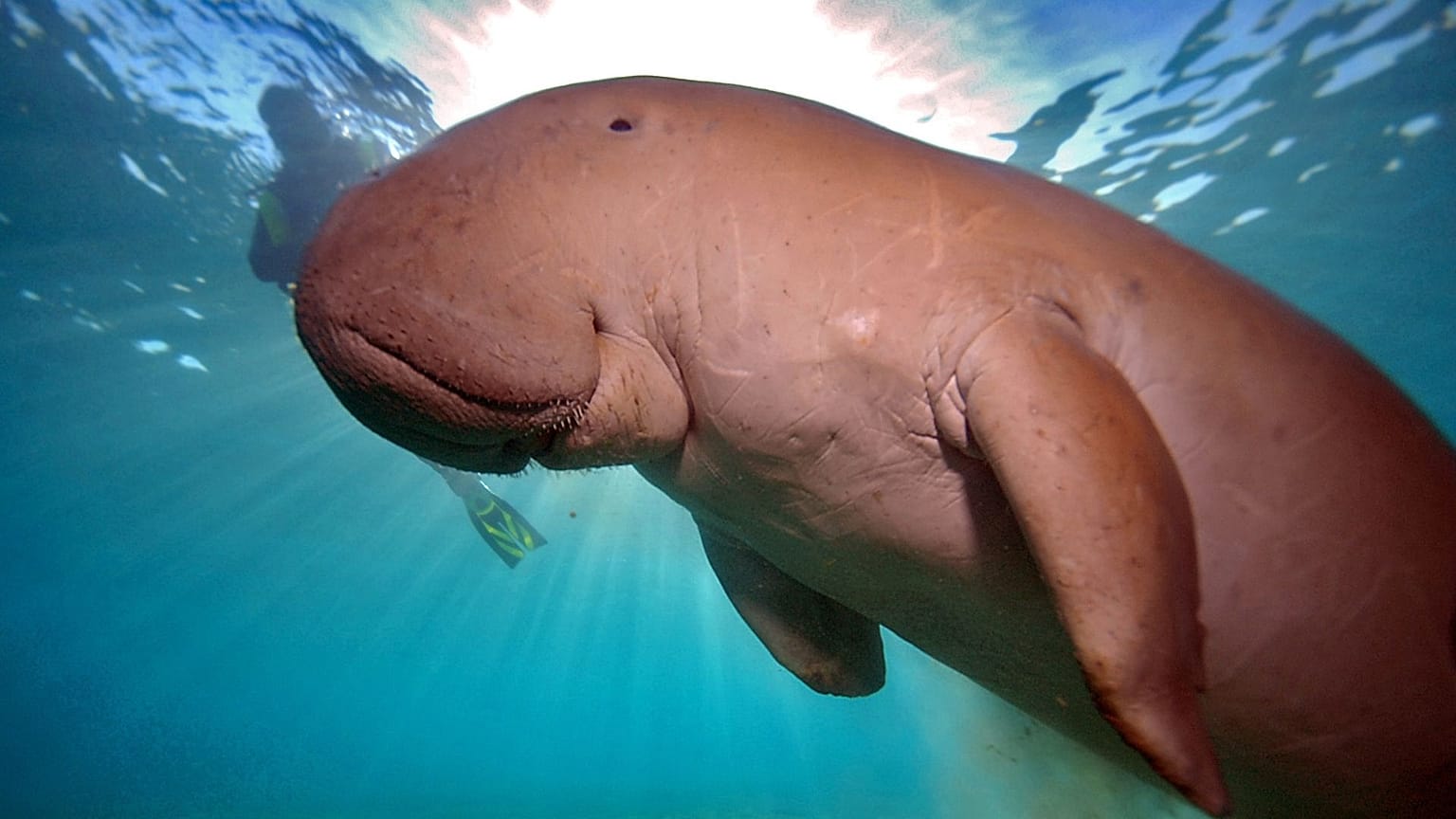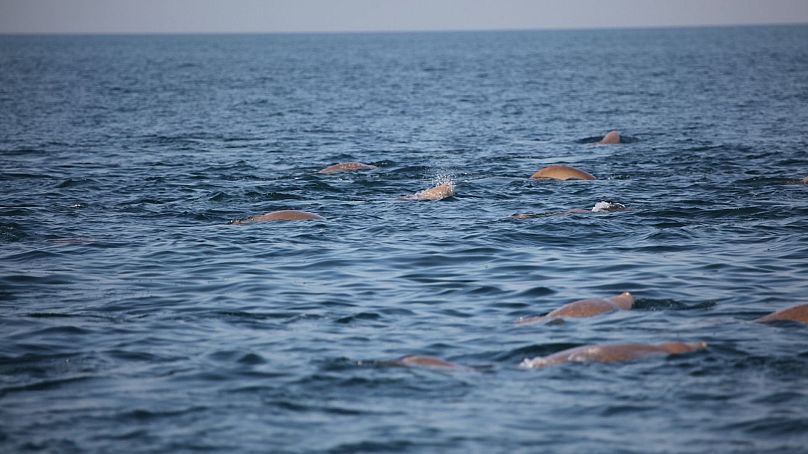It is the first time such a charismatic marine megafaunal species has disappeared from Chinese marine waters.
One of the sea’s most peaceful creatures - said to have inspired mermaid tales - has been declared essentially extinct in China.
Nicknamed “sea cows”, dugongs are herbivorous marine mammals most often found across Pacific-Asian waters. While they still exist elsewhere, only three people surveyed from Chinese coastal communities have seen the animal in the last five years.
It has led researchers to conclude that dugongs are now “functionally extinct” in China; the first time a large vertebrate has disappeared from the country’s marine waters
What are dugongs?
Described by the WWF as “plump” in appearance, they get around using their striking dolphin-like tails, living off seagrass grown from shallow ocean beds.
People often get them confused with their cousin - the similarly striking manatee. Unlike their close relation, Dugongs inhabit eastern ocean waters rather than freshwater lakes, and are slightly smaller in size.
Their tranquil existence hasn’t stopped them from falling victim to threat of extinction - in fact it may have put them in harm’s way.
The International Union for Conservation of Nature’s (IUCN) Red List of Threatened Species classifies them as “vulnerable”. This is said to be species-variable as studies show some populations of the mammal may have escalated to “critically endangered”.
It’s hard to know how vulnerable dugongs could be
We understand that manatees are threatened by warming water temperatures, which make it easier to assess their status as vulnerable animals.
Picturing the future for their cousins is a little foggier.
Dugongs actually help the climate through the protection of their food source, seagrass meadows, as they are known to be a great means of “blue carbon” storage.
The problem lies in fishing and human activity, which puts those meadows at risk and have caused numbers of dugongs to plummet since the 1970s.
To what extent is unclear - their shyness and preference for muddy waters make them very difficult to spot.
Dugongs declared ‘functionally extinct’ in China
To try and get a better sense of how dugongs were faring in China, researchers conducted a large-scale interview survey across four Chinese provinces.
Only 5 per cent of 788 respondents reported past dugong sightings, with an average last-sighting date of 23 years earlier. No records are documented after 2008.
It’s possible that China has few surviving dugongs that just haven’t been spotted, the researchers acknowledge, so they can’t confirm complete regional extinction. But the chances are that dugongs are long gone from Chinese waters.
“This rapid documented population collapse also serves as a sobering reminder that extinctions can occur before effective conservation actions are developed,” they write in the Royal Society Open Science journal.
What is being done to protect dugongs?
Given the animal’s large residency in the area, it is no surprise that Qatar is leading the way in making sure a firm effort is put towards keeping them safe.
Dugong’s relationship with the country is a special one - they were first known to populate the Arabian Gulf over 7,500 years ago. It’s uncommon for the creatures to travel in large groups, but numbers are so strong that the largest sighting of over 800 of them was found in Qatar in 2020.
The country’s environmental ministry has spearheaded several initiatives to raise awareness of the role the animal plays in the nation’s sea life, with funding for research that will inform conservationists on how to better protect them.
“Dugongs play an important role in marine ecosystems - they contribute to maintaining healthy seagrass meadows that help ensure vegetative balance for a healthy ecosystem,” says Ismail Al-Shaikh, a Technical Research Supervisor at the helm of this research.
“With the species currently classified as vulnerable, we hope that our research will continue to support the population growth of these serene animals, so that they can continue to flourish in Qatar and beyond”.
Qatar isn’t the only country recognising the importance of dugongs
The Philippines has also introduced legislation to protect dugongs under conservation laws that inflict harsh penalties on fishermen who harm them. It’s the first marine protection in the country of this kind.
The country’s national situation got so bad that dugongs could only survive in specially protected areas where they were protected from fishing boat propellers and ocean waste.
Technology that allows researchers to map their sightings from directly within the ocean was also implemented back in 2016.



















